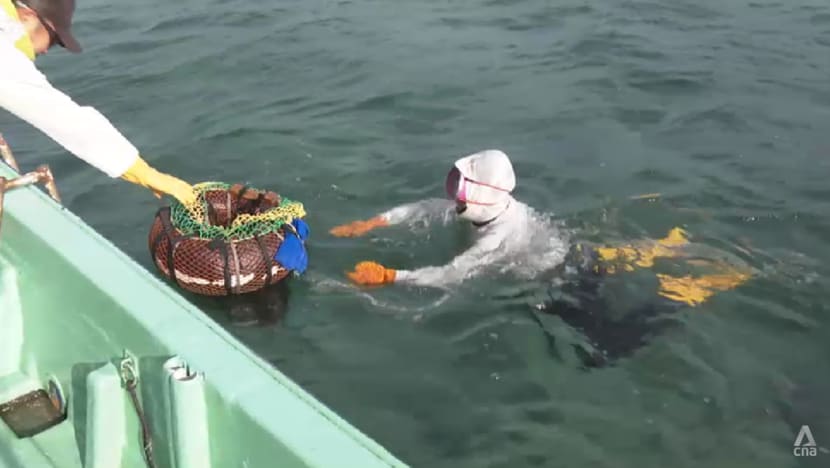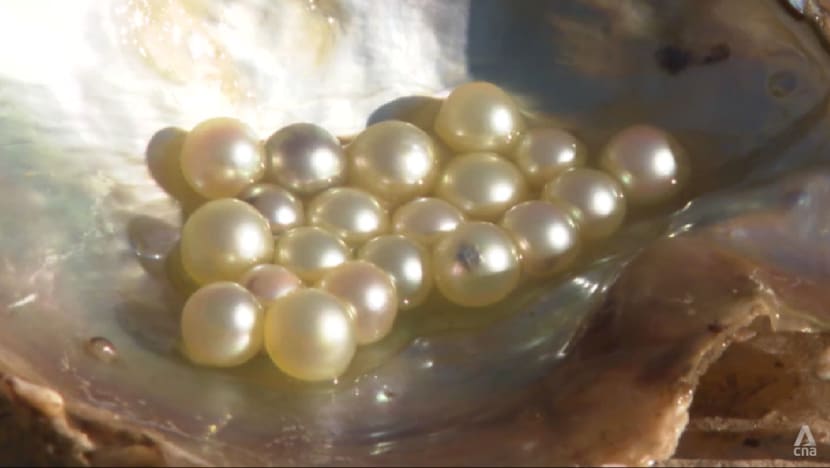The last 'ama' fisherwomen of Japan: Free-dive fishing tradition in danger as diver numbers plunge
These female freedivers submerge to great depths to forage for seafood, with minimal equipment and without oxygen tanks.

Across Japan, only about 2,000 ama fisherwomen are left. Ama simply means woman of the sea, and refers to these Japanese who practise free diving.

This audio is generated by an AI tool.
SHIMA, Japan: Free-diving fisherwoman Kimiyo Hayashi could well be the last of her generation to make a living harvesting seafood using the traditional method.
The 69-year-old is among only 500 “ama” divers in Japan's rural Mie Prefecture, down from more than 4,000 such professionals in the 1970s.
Across Japan, only about 2,000 ama divers are left. Ama simply means woman of the sea, and refers to these Japanese who practise free diving.
CLINGING ON TO A DYING TRADITION
For centuries, ama freedivers have lived off the waters rich with marine life around the Mie Prefecture, known as the birthplace of the country's famous cultured pearls. They can dive to depths of 30m, and hold their breath for over two minutes.
But their fortunes are ebbing, as climate change, technology and an exodus of new blood worsen a decline already happening due to an ageing workforce.
Observers said there are concerns that the ama fishing culture, which is more than 2,000 years old, may not survive into future generations.
“Even though young people join, but because they cannot make a living as an ama today, many of those young people (eventually) leave for other jobs,” said Ms Hayashi.
She is unfazed by the freezing waters as she dives for shellfish, and does so with minimal equipment: a wetsuit, fins and a diving belt made from rope and stones.

But gone are the days when she would swim back with a full basket.
“Due to global warming, the sea temperature is rising every year, impacting abalone and turbo shells,” said Ms Hayashi. “Seaweed is ceasing to grow, meaning there is hardly any feed.”
Ama divers now largely harvest shellfish for their meat.
But until the 1960s, before technological advancements, they had an essential role in diving to plant and retrieve pearl oysters. Aquaculture technology has since developed, and is increasingly being used to protect these oysters.
Now, the pearl industry is at risk of dying out due to climate change, urbanisation and ageing.

FISHING FOR PEARLS
In Mie prefecture’s Masaki Island, for instance, there used to be more than 1,000 people working in the industry. Today, there are only 40, with many of them elderly.
As the number of pearl farmers declines, related businesses with century-long histories are also dwindling.
Over in Kashikojima, an island in Mie known for its pearl jewellers, many of the owners are getting on in years.
Faced with diminishing prospects, younger people there are moving to the big cities to find work.
“The industry is gradually shrinking, with fewer people,” said Mr Naoto Yoshimori, president of pearl jeweller Yoshimori Pearls.
He fears his third-generation family business would end with him, as his children do not appear keen to take over the store.
“I have two sons. They have moved on in different directions,” said Mr Yoshimori.
“I will try to keep going for a little bit more. If they come home, they don’t need to work hard. It could be their side business.”



















